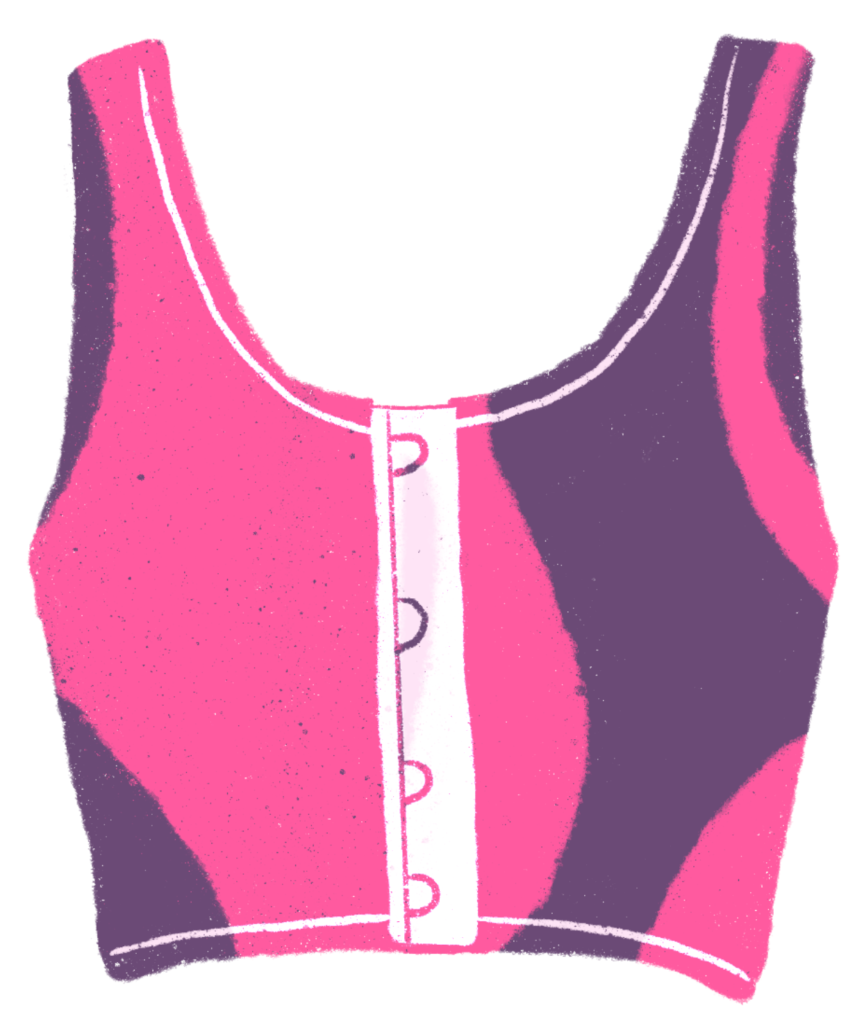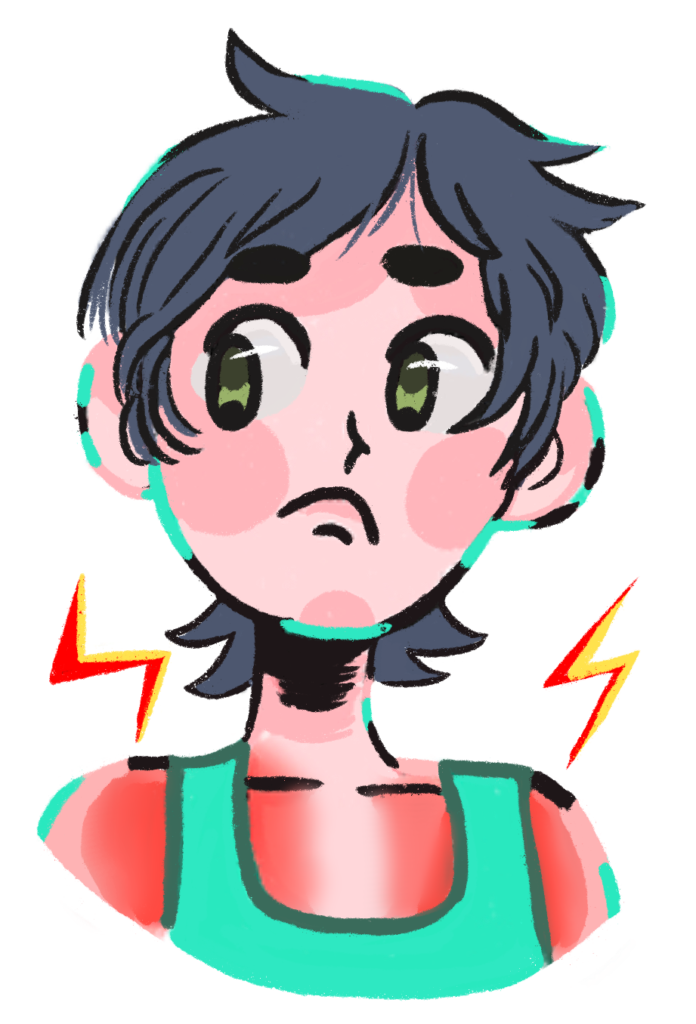Chest binding is a common practice that compresses the chest tissue for a flatter chest appearance. Many people bind their chests for different reasons. Some find that their chest causes significant gender dysphoria, leading to discomfort and distress. But binding can be for anyone who wants a flatter appearance to their chest or to feel more comfortable—not just trans guys and transmasculine people.
This guide goes through best practices and how-tos for chest-binding, such as getting and wearing a binder, minimizing side effects, and what to do—and not to do—if you can’t bind. Pertinent research studies are included for interest.

Where to get a binder
The most reliable sites for binders are:
- Underworks
- Gc2b
- T-Kingdom
- Shapeshifters
- FLAVNT
- GenderGear.ca
- Point of Pride (Free chest binders to any trans person who can’t afford or safely obtain one. Currently, they get about 60 requests daily, so there is a waiting period.)
- Genderbands
- Tumblr Transgender Clothing Exchange
If you are having trouble getting a binder, there are local and national binder exchange programs and low or no cost programs. These can help you get a gently used binder. Our in-house case managers are also happy to help you find a binder! Please contact us to learn more.

Measuring your chest
- For the first measurement, use measuring tape to measure under your arms, just below the armpits, and around your back and chest.
- For the second measurement, pull the measuring tape snug over the fullest part of your chest.
- Add the two measurements together and divide by two. If you’re between sizes, round up to the larger size.

Sizing
- Don’t get a binder that’s too small—this can cause you more pain. You need to be able to breathe!
- Make sure your binder doesn’t feel like it’s digging in.
- Make sure to follow the recommended sizing of whichever binder brand you go with.
Binder use
Binders can be hard to put on and take off and take some time to get used to. Here are tips to make it easier:
- Use baby powder to make putting your binder on and taking it off easier!
- It may be easier to step into the binder than to pull it on like a shirt.
- Turn the binder inside out and upside down and use sleeves as handles to pull the top of your binder (end closer to feet) up to your shoulders.
- Put arms through the sleeve holes and adjust the chest. Leave the binder folded under or pull the bottom of the binder out.
- To adjust your chest, reach in from the neck hole and push the chest down and out—nipple toward your armpit —to achieve the flattest-looking chest possible.
- Binders with zippers and/or Velcro can be helpful for larger chests.
To keep your binder from rolling up:
- Pull it over your jeans and/or belt.
- Tuck your binder in between your boxers and pants.
- Tuck your binder inside your boxers.
- Use lotion to hold the binder in place.
- If you’re crafty, you can sew extra fabric to the bottom of the binder.

Timing
- Limit the time you spend wearing your binder. If possible, give your body a break every 8-12 hours.
- Don’t sleep in your binder.
- Don’t exercise in your binder. You can swim in your binder, if you don’t do anything extreme like laps. Binders are also harder to take off a wet body.
- Signs to take a break: chest pain, trouble breathing, numbness, tingling, overheating, dehydration, skin rash or irritation or sores, back pain and/or soreness, rib pain and/or soreness.
Chafing relief
Chafing is super common, especially in warmer weather. The following can help prevent chafing:
- Use Body Glide
- Wear an undershirt under your binder
- Use lots of baby powder
- Wear a binder made with cool fabrics such as cotton
- Switch to a mid-length or sports bra-style binder
- Stay hydrated

Sweating
Not all binders breathe well. Sweating can be a lot worse if you’re on testosterone, too. Keep this in mind! A build-up of sweat can irritate the skin and cause rashes and sores. Sound familiar? Try the following:
- It can help to wear a thin cotton shirt underneath your binder.
- Apply a layer of corn starch to your body to help keep the binder from holding in moisture.
- Wash the irritated area with anti-bacterial soap.
Hygiene
- Wash your binder regularly with soap and water.
- Handwash your binder at night and let it air-dry while you sleep.
- You can use a washing machine. Just make sure to wash your binder on the cold setting.

Binding and top surgery
Over a long time, binding can alter your skin’s natural elasticity, meaning the skin becomes looser than for those who don’t bind. Don’t worry, if you’re planning to get top surgery one day, this doesn’t ruin your chances of good results! The effects are minor.
Side effects of binding
- Most common: back pain, overheating, chest pain, shortness of breath, itching, bad posture, shoulder pain.
- Despite these health concerns, most people still bind due to the positive effects on mental health and quality of life.

Pain from binding
Binders are awesome, but they’re not comfortable. If you start getting pain from regular binding, do the following:
- Give your body breaks when you can
- Stretch throughout the day
- Consider massage and/or physical therapy if stretching is not enough
If binding still hurts, try a larger binder or find alternatives, such as TransTape.

Other chest flattening options
- Sports bras don’t achieve a completely flat appearance but can be more comfortable.
- TransTape or KT Tape are much less painful and can give you a flat appearance, but they have a learning curve to use properly.
If you can’t bind
- Wear shirts with patterns and darker colors to help distract from the chest area. Vertical stripes draw attention away from curves.
- Layer your shirts. Start with a tight shirt or sports bra.
- Wear your shirts and jackets unbuttoned or unzipped.
- If you are layering sports bras, use caution. You’ll get an uneven shape and the bras will cut into your skin.

Careful!
- Don’t use ACE bandages, plastic wrap, or duct tape. These restrict your ability to move properly and breathe.
- ACE bandages constrict and get tighter and tighter as you breathe.
- Duct tape can be painful to remove, reduces oxygen to the area, and causes moisture to build up.
- Don’t wear two binders at once. This can damage your ribs and lungs, cause uneven compression, and the binders will cut into your skin.

Evidence-based research on chest binding
The binding practices of transgender and gender-diverse adults in Sydney, Australia
(Lee, et al., 2019)
- In a 2019 study aimed at understanding the reasons behind chest binding, researchers reported that many motives were driving the desire to bind distinct from the desire to be perceived as male.
- Although being perceived as male may be one reason someone might bind their chest, it’s typically not the sole reason for the practice.
- The study reported that individuals were binding to feel more authentic, minimize discomfort, and increase safety.
- Authentic living includes being perceived correctly in regard to gender, as well as being comfortable with one’s body. For nonbinary people, not being perceived as female may be a critical aspect of authentic experience, although they might not identify as male.
- Chest binding for many trans people is a matter of psychological wellbeing, and it helps reduce gender dysphoria.
Health impact of chest binding among transgender adults: a community-engaged, cross-sectional study (Peitzmeier, et al., 2016)
- This first-ever study on chest binding examined 1800 trans adults and noted that binding is a positive experience for most, improving mood, self-esteem, anxiety, and depression.
Association of Chest Dysphoria With Anxiety and Depression in Transmasculine and Nonbinary Adolescents Seeking Gender-Affirming Care (Sood, et al., 2021)
- Chest dysphoria is associated with higher anxiety and depression in AFAB (assigned female at birth) transmasculine and nonbinary youth.
- This association is independent of the level of gender dysphoria, the degree of appearance congruence, and social affirmation steps taken.
- Conclusions and relevance: Treatment options to alleviate chest dysphoria should be made accessible to adolescents and tailored to individual needs.
The Impact of Chest Binding in Transgender and Gender Diverse Youth and Young Adults
(Julian, et al., 2020)
- The study found a significant correlation between increased chest dysphoria and lower life satisfaction.
- Those binding reported less misgendering.
- The mean age in this study was 16.
- Over 50% had been binding daily for 1-4 years, and 61% were binding for 8-16 hours a day.
- When asked why they had not bound in the past, 288 individuals (47.4%) attributed this to unsupportive parents.
- Most experienced physical effects, but 95% said they would continue to bind because they felt more comfortable in public spaces, and 95.4% said because they felt it was important to have a masculine appearing chest.
- 63.7% of participants cited safety in public places as a reason to continue binding despite negative physical side effects.
- The vast majority, 548 (90%), reported that they would like to undergo chest surgery in the future.

Additional sources
- Binding Resource Guide (Fenway Health)
- Binding 101: Tips to Bind Your Chest Safely (Point of Pride)
- Chest Binding 101: Everything You Need To Know (Transguy Supply)
- Binding: Creating a Male-Looking Chest (Hudson’s FTM Resource Guide)
The true danger with binding is that health care professionals are largely unaware of the phenomenon and need to learn how to help people bind safely and effectively. Providers can minimize symptoms with proper education and guidance, including learning how to size and fit a patient for a binder, advocating for insurance companies to provide coverage for this medical device, and working with trans-affirming binder companies to provide in-clinic binders. It’s key for providers to initiate non-stigmatizing discussions about binding.
If you have a question about binding not answered here, please send us a message.


